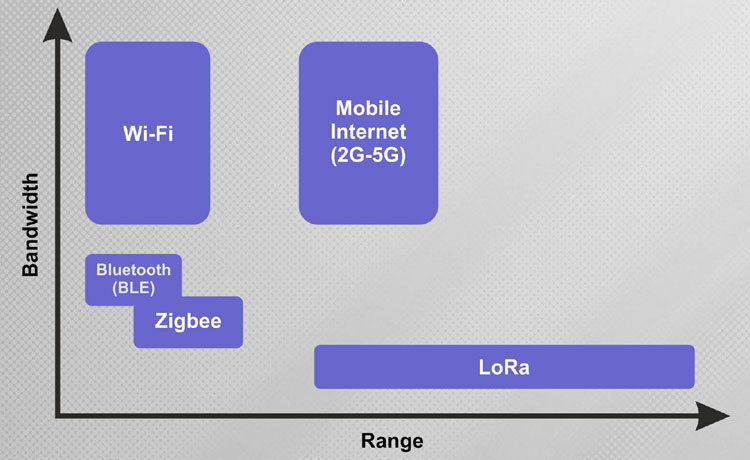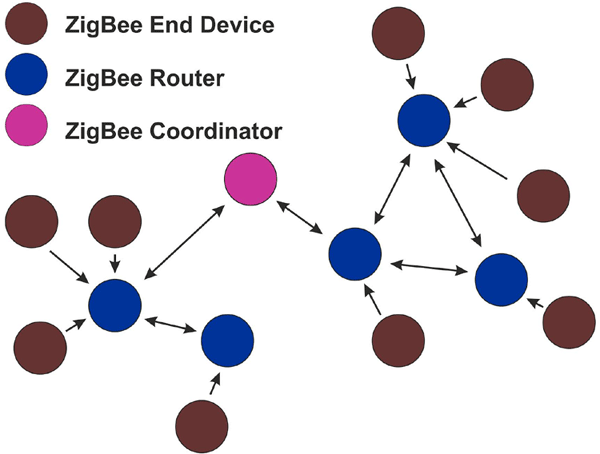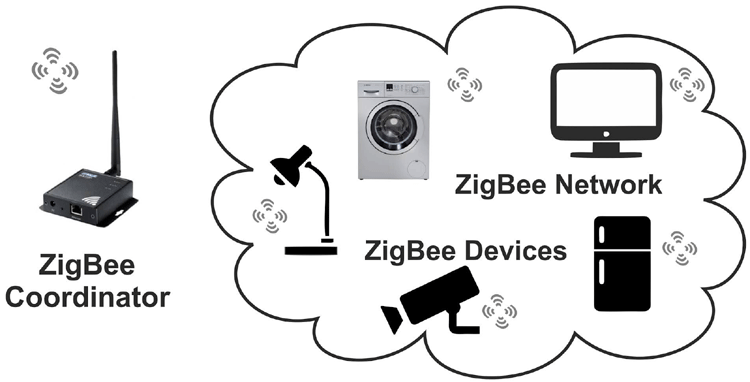Zigbee is a standard protocol for wireless networking that mainly addresses the need for low-power devices with a low data rate for short-range communication. Zigbee is built upon the IEEE 802.15.4 standard and is widely used in home and industrial automation. It is a standard protocol built for control and sensor networks.
Although, Zigbee shows some similarities to a BLE in the perspective of bandwidth and range (both use 2.4Ghz). But the Zigbee protocol is much more preferred when dealing with IoT-based applications. Let’s discuss more it and find out why?
How is Zigbee different from Wi-Fi, Lora, and Bluetooth Devices?
As already mentioned, Zigbee protocol is one among the many types of communication protocol for IoT devices and is usually preferred for home automation and IoT-based applications where low-powered and lower data rates devices are preferred. Zigbee devices can usually operate for several years on a single battery charge, as they are low power consuming and can be switched to sleep mode for prolonged periods. The graph below depicts a comparison of different wireless technologies on the parameters of their bandwidth and range.

There are some characteristics in which Zigbee outruns these other wireless protocols:
- Zigbee has a very low connection time (approx 30ms), other wireless protocols such as Wi-Fi and Bluetooth can take up to several seconds to be connected or paired.
- Zigbee has a tendency to connect several devices to a single network (up to 240 devices), whereas the Wi-Fi and Bluetooth can connect to up to 32 and 7 devices respectively, which is pretty low when compared to Zigbee.
- As the Zigbee protocol is for low data rate transmission applications, it can transmit data packets up to a data rate of 20-250kbps, which is enough for home automation applications. Bluetooth and Wi-Fi have much higher data rates when compared to Zigbee, which is not ideal for basic home automation applications.
- Zigbee is an open-source protocol that uses AES cryptographic algorithm for data encryption. This algorithm is used by several banks to keep their data secure. The application of this algorithm makes the Zigbee protocol much more safe and reliable.
- It has a decent range of communication; 75-100 meters indoors and up to 300 meters outside under line of sight conditions. This range is much more than when compared to other wireless communication protocols.
- Last but not the least, Zigbee has very low power consumption and can operate for prolonged times on a single charge. Whereas, Bluetooth and Wi-Fi compatible devices consume a lot of energy to operate, which is not efficient and desired for battery-powered applications.
How does a basic Zigbee Network Work?
The Zigbee network consists of various components or devices, each plays an important role in maintaining the connection and communication. Let’s dive deeper and understand their role.
- Zigbee Coordinator: A coordinator is responsible for forming a network in the first place. There can only be one coordinator in a network, and it is also called the root of the network. A coordinator also has the responsibility to select a valid channel, route the traffic, assign a unique ID to the network.
- Zigbee Router: The routers act as a midpoint between a coordinator and an end device. They have the capability to route the traffic. The router can also receive and store data for the end devices.
- Zigbee End Device: End devices are the ones that do not route the traffic. In many cases, a mobile device may be an end device. They contain just the information to communicate to a parent device (Router or a coordinator). The end device may also communicate with the router and updates if it has joined any new router.

Apart from their individual capabilities, the key difference in all these devices is that the coordinator can route the traffic and is also responsible for forming the network, a router can route the traffic and an end device can not route traffic. Also, there are four types of network topologies that Zigbee network supports; Star, Mesh, Tree, and hybrid topology.
As we have discussed above, Zigbee is widely used in home automation. Let us understand why and which major companies have adapted this wireless technology.
Why is Zigbee here to stay in Home Automation?
Home or industry automation has boomed in the last couple of years, everybody wants their home to be smart, home appliances to be controlled wirelessly without any wire hassle. Zigbee supporting mesh networking opens up a wide scope for these kinds of applications. A mesh network is described when a network connection is spread out wirelessly, which can communicate and share data among each other across a large area. Zigbee’s mesh networking allows it to have faster communication between its devices along with stability (in the sense that if one device in the network fails to work, others do not get affected).
Like Bluetooth having point-to-point communication, the Zigbee protocol works on mesh networking, making it the perfect choice for home automation purposes.
Today many of the big companies such as Amazon (Amazon Echo), Philips (Philips Heu), Ikea, and many more rely on Zigbee for their product automation applications.

Since it is a standard protocol, it opens up the scope to connect and control wireless devices from other manufacturers and distributors through a single hub. What do you think will be the ideal communication protocol for home automation applications? Let us know in the comment section below.













